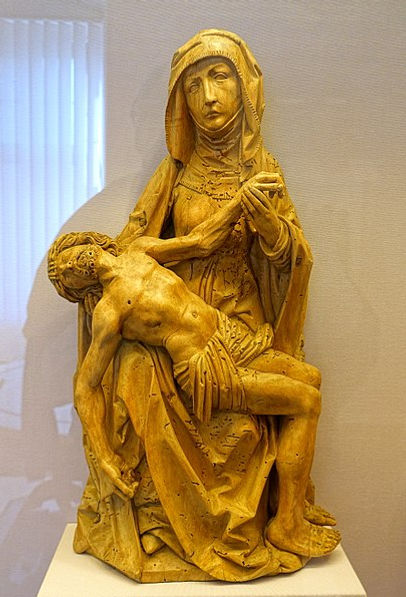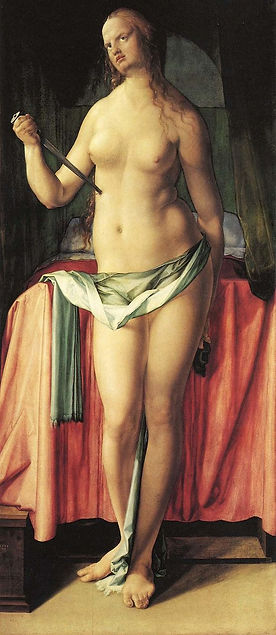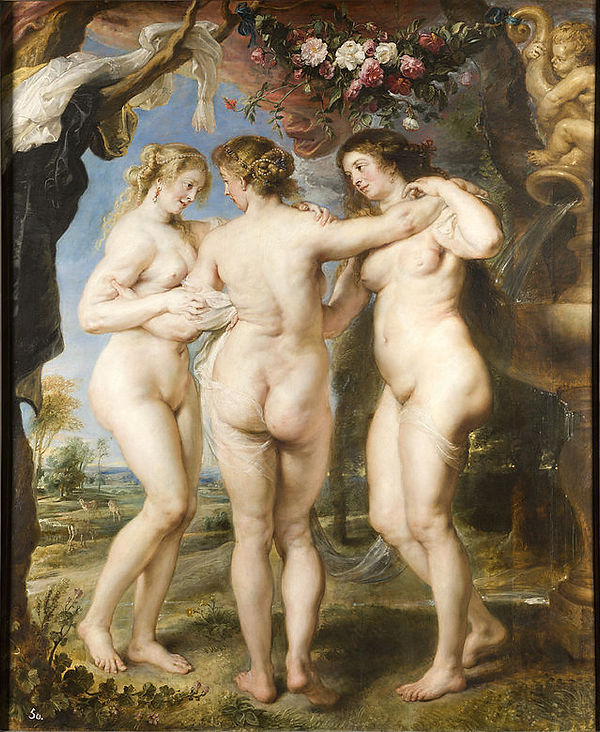<A>
Demosthenes statue (Vatican):
Roman copy of original bronze, sculpted by Polyeuktos, commissioned by the Athenians in 280 BC (some 42 years after his death) for the Agora, near the Altar of the 12 Gods. The original is copied in at least 50 known examples (most found in Rome), 3 of which include the body. The copies consistently depict a man in his 50s, with a wrinkled, oval face, a furrowed forehead, bushy eyebrows, thin cheeks, a long, pointed, slightly aquiline nose, deep set eyes, short, curly hair, and a tidy beard, a closed mouth with thin lips crowned by a thick moustache. The worried, tight-lipped visage reflects the severe expression and harsh character that were said to have been part of Demosthenes’ appearance

<B>
Aeschines (portraits): *
statue from the late 4th century BC; in the National Museum, Naples.

<C>
portraits of Lysias (at Naples): *
bust of Lysias, marble, dated Early Imperial period, from a Greek, early 4th century BC

<D>
Lucas Cranach: *
Cranach’s mythological scenes nearly always feature at least 1 slim female figure, naked but for a transparent drape or a large hat. These are mostly in narrow upright formats; examples are several of Venus, alone or with Cupid, who has stolen a honeycomb, and complains to Venus that he has been stung by a bee (Weimar, 1530; Berlin, 1534). Other such subjects are Diana with Apollo, shooting a bow, and Hercules sitting at the spinning-wheel mocked by Omphale and her maids. A similar approach was taken with the biblical subjects of Salome and Adam and Eve. These subjects were produced early in his career, when they show Italian influences including that of Jacopo de' Barberi, who was at the court of Saxony for a period up to 1505. They then become rare until after the death of Frederick the Wise (1525). The later nudes are in a distinctive style which abandons Italian influence for a revival of Late Gothic style, with small heads, narrow shoulders, high breasts and waists. The poses become more frankly seductive and even exhibitionist.

Apollo and Diana (Apollo and Diana in forest landscape) 1530
<E>
Tilmann Riemenschneider: *
Pietà, wood carving, 1515-1525

<F>
Durer's Lucrezia: *
Not considered one of his best paintings with a sour expression, unnaturally elongated, disproportional figure & uncomfortable contrapposto pose, it comes across as awkward & austere. Possibly a parody of the classical feminine figure, not an exaltation. It compares unfavourably with Cranach’s Lucretia. However, it is a less formal treatment, with more inward feeling reflecting a concern for confronting death and dying. Her face is presented as a real woman, with some idealisation. Her expression is difficult to interpret, lacking aspects of passivity, chastity, or sly sidelong glances often associated with contemporary depictions. While she has monumental and statuesque pose, this lacks the pagan sensuality present found in his Adam and Eve (1507).

<G>
Durer (Italian studies): *
Durer first journeyed to Italy in 1494, fearing the Plague in Nuremberg. He travelled to Venice to study its more advanced artistic world. He probably also visited Padua and Mantua. Through Wolgemut's tutelage, he learned to make prints in drypoint & design woodcuts in the German style, based on the works of Martin Schongauer and the Housebook Master. He returned to Nuremburg in 1495. He was back in Italy again 1505-07. He produced a series of works executed in tempera on linen. These include portraits and altarpieces, notably, the Paumgartner altarpiece and the Adoration of the Magi. In early 1506, he returned to Venice staying there until 1507. By now his engravings were very popular & were being copied. In Venice the emigrant German community gave him a valuable commission for the church of San Bartolomeo: the altar-piece Adoration of the Virgin or the Feast of Rose Garlands. It includes portraits of members of Venice's German community & reflects strong Italian influence. It was subsequently acquired by the Emperor Rudolf II and taken to Prague. Other paintings Dürer produced in Venice include The Virgin and Child with the Goldfinch, Christ among the Doctors (supposedly produced in a mere five days), and a number of smaller works.
<H>
Job (French cathedral-sculpture): *
illustration LEFT: lintel, portal, tympanum, Circa 1220, Chartres Cathedral
illustration RIGHT: relief- exterior, north transept, Calixtus portal, tympanum, detail, the Devil Laying his Hand on Job; , 1225-1230, Reims Cathedral


<I>
Rubens (swelling bodies): *
The Three Graces, oil painting, 1630-35
